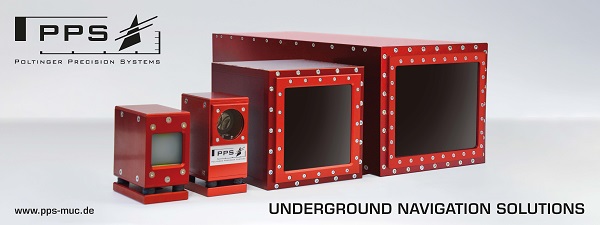Managing Tunnel Accidents Professionally
Austrian Institute of Technology shares their insight into tunnel emergency situations.
Cooperation of the AIT Center for Technology Experience with the Zentrum am Berg (ZAB) of the Montantuniversität Leoben: two research projects (MED1stMR and NIKE MED), three emergency organisations and a real exercise in the tunnel on 16 September 2023.
Who does what at the right time? Who manages and coordinates the incident? Accidents in places
that are difficult to access - such as in a tunnel - are even more difficult to manage. Austria is a
tunnel country, with many road and railway tunnels. The longest road tunnel is the Arlberg tunnel
with almost 14 km, followed by the Plabutsch tunnel and the Gleinalm tunnel (both Phyrn
motorway). According to Asfinag, there are currently 166 road tunnels in Austria - which puts
Austria in second place in Europe behind Italy.
This makes it all the more important to ensure safety in tunnels. In the event of an accident or fire
in the tunnel, it is important to react quickly. When people are trapped or injured, every second
counts - and the emergency services should be on top of their game. Coordinated deployment of
the fire brigade, rescue services and police is the top priority. It is also important to communicate
with the operations centre and to have an up-to-date overview of the situation, how many people
are seriously injured and in which order (triage) the emergency paramedics have to take care of
them.
AIT has years of experience and know-how in the field of Extended Reality (XR), especially in the
area of training for different professional groups. "We see XR as a central element in preparing
emergency forces for their daily work and complex situations in a targeted and innovative way,"
emphasises AIT researcher Helmut Schrom-Feiertag from the Center for Technology Experience.
This is not only about training in the virtual world, but also about biosignal and stress
measurement, a combination of virtual and real world (use of tangible objects such as stethoscope
or respirator) as well as a multi-sensory "experience" during training - for example through heat,
wind or wetness. In order to develop a virtual training that is as realistic as possible, practical
experience and exercises are of great importance.
Researchers and emergency services pull together
It is important to prepare for accidents in the best possible way. But the joint practice of all
emergency forces is also crucial. Two research projects are now working together on this - to
improve operations in the event of an emergency.
The MED1stMR project (funded by the EU Horizon 2020 programme), led by the AIT Center for
Technology Experience, is developing a mixed reality solution for emergency paramedics to train
complex accidents in a virtual environment as a team. A total of 18 partners from nine countries
are involved in MED1stMR, including seven different international medical emergency
organisations/training centres from all over Europe. (all partners here:
https://www.med1stmr.eu/consortium). A major field test is currently underway as part of the
project: Emergency organisations from all over Europe are testing the MED1stMR prototype and
giving feedback on how to optimise the training. http://www.med1stmr.eu
The NIKE MED project (funded by the KIRAS programme), led by the ZAB (Zentrum am Berg) of
the Montanuniversität Leoben, aims to evaluate emergency capacities together with Med Uni
Graz, Mindconsole GmbH, the University of Innsbruck - Institute of Psychology, the Federal
Ministry of Defence, IL - Ingenieurbüro Laabmayr & Partner ZT GmbH and DCNA (Disaster
Competence Network Austria) and to develop an application for all emergency forces involved in
order to ensure that disaster operations underground or in tunnels can be carried out in a
coordinated and professional manner. in the tunnel in a coordinated and professional manner. In
this way, the emergency medical care of the injured is to be optimised in the future.
https://www.kiras.at/gefoerderte-projekte/detail/nikemed
The goal now is to benefit from the experiences of both research projects and to improve the
technologies even further. To this end, a large-scale emergency exercise will be held on 16
September 2023 to better prepare first responders for real operations. Johanniter Austria, the
Inzersdorf volunteer fire brigade and the Gleinalm police will train together in the underground
facilities of the Zentrum am Berg in the tunnels of the Styrian Erzberg.
Procedure of the large-scale emergency exercise
During the large-scale exercise at the ZAB, a bus accident with a large number of injured people is
simulated in a real tunnel. "We are currently testing exactly this scenario in the MED1stMR project
with the emergency paramedics in the virtual environment. A comparison of both training methods
will provide information about future potential for improvement," explains MED1stMR project
manager Helmut Schrom-Feiertag from the AIT Center for Technology Experience.
The one-day real large-scale emergency exercise in the tunnel represents a major effort: "Around
20 first responders will train together for the emergency. Including extras, organisations and
researchers, a total of over 70 people will be involved in the exercise," says Prof. Robert Galler,
Head of Department at the ZAB, explaining the dimensions of the exercise. The findings from the
exercise will subsequently flow into both research projects and are intended to improve training for
major emergencies and the organisation on site of such challenging situations for all emergency
forces in the future. "It is great that we are working together on a cross-project basis and with
benefits for both research projects," both researchers agree.
Train treatment of specific injuries
In the event of an accident underground or in a tunnel, special, often severe injuries occur, such as
poisoning (by toxic gases, fires and smoke development), large-scale burns or large-scale
mechanical impact by structural or vehicle parts. In addition, there is often contamination with NBC
substances, which also pose a risk to the emergency services.
ZAB as the ideal training environment
Real training days for emergency forces are expensive and organisationally complex - both in
terms of preparation and implementation. A concrete example: The closure of the Kaisermühlen
Tunnel in Vienna for training purposes is a major event that also causes a lot of organisational
effort in terms of traffic. The ZAB offers a great advantage here - nothing has to be closed or
specially prepared. The Montanuniversität Leoben operates a research infrastructure at Erzberg
that is unique in Europe in terms of the construction and operation of underground facilities. The
test and research facility consists of four tunnels, each 400 m long. https://www.zab.at/ueber-uns/
die-anlage
Statistics
According to Asfinag, there are 166 road tunnels in Austria. In 2021, 125 accidents occurred in
Austrian tunnels, according to Statistik Austria, and 186 people were injured. Most accidents and
injuries occurred in Upper Austria, followed by Tyrol and Vienna.
https://www.statistik.at/fileadmin/publications/Strassenverkehrsunfaelle-2021.pdf (in German)
Service
Media representatives can participate in the real exercise on 16 September as observers.
Interviews with the project leaders and the emergency personnel involved can be organised.
From AIT.
cover tunnel photo by: Matt Brown from London, England / CC BY
Copyright 2019-2024 TunnelContact.com








